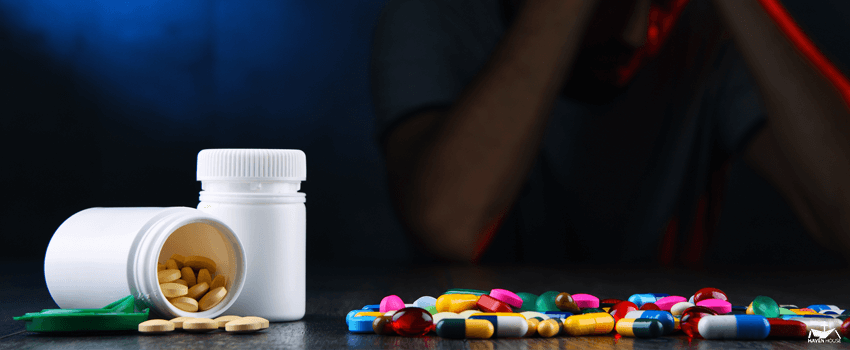

It could surprise you to learn that you probably utilize psychoactive substances if you’re unfamiliar with them. Do you like a cup of coffee in the morning, for instance? Have you ever consumed alcoholic beverages? It’s interesting to note that this medication group includes coffee and alcohol. While a cup of coffee or glass of wine on the weekends is usually safe, other medicines in this class have more harmful consequences.
What Are Psychoactive Drugs?
Because they affect the central nervous system’s functionality directly, alcohol and narcotics are considered psychoactive drugs. A substance is “psychoactive” if it can alter the rate at which electrical impulses travel through the brain’s neural pathways. For instance, cocaine speeds up this electrical activity, whereas alcohol slows it down. By balancing chemical imbalances, psychiatric medicines can cure mental problems.
Alcohol, illicit and prescription narcotics, certain plants, some animals, and even some pharmaceuticals contain psychoactive chemicals. The most popular psychoactive drugs humans use to affect their mental state are alcohol and coffee. Even if these medicines are legal, their excessive use can have adverse physical and psychological effects.
People often choose when and how often to take psychoactive drugs. However, there are instances where psychoactive medications are utilized to manipulate someone’s mental state to take advantage of them. Rohypnol, a term used to describe a date-rape drug prohibited in the United States, is a typical example of this.
Risks of Psychoactive Drugs
Additionally, you should be aware that it is unlawful to use prescription psychoactive medicines for purposes other than those intended, including taking pills meant for someone else but delivered to you.
The leaves, blooms, and buds of several plants, hallucinogenic mushrooms, cactus, and other naturally occurring compounds, may also be psychoactive. Some individuals believe that because these compounds are found in nature, they are less dangerous than drugs that are produced. That is not the case, though.
For instance, there may be an increased danger of overdose or poisoning for someone who utilizes a psychoactive plant to alter their state of mind.
The reason for this is that, unlike synthetic medicines, the potency of the psychoactive component or toxicity of the plant is not under the user’s control. The same is true for narcotics bought off the street from a dealer, frequently laced with a range of potentially dangerous fillers and psychoactive compounds.
Although many “psychoactive” drugs and medications are addictive, not all are.
All Types of Psychoactive Drugs
The drug classifications of these psychotropic substances includes various categories:
-
By the common (effects) on the brain and body that they all have, such as stimulants and depressants
-
By their propensity to lead to addiction (high to low)
-
Based on their chemical makeup
-
Schedules I through V of the U.S. Drug Enforcement Administration, which categorize these medicines based on their misuse potential
Stimulants, narcotics, and hallucinogens are just some of those that belong to all types of psychoactive drugs.
Stimulants
Effects might include improved mood that can reach euphoria, increased energy, excitability, enhanced alertness, and physical reactions, including elevated heart rate and blood pressure.
Caffeine, nicotine, amphetamines, and cocaine are a few examples of stimulants. Excessive cocaine usage can have various negative consequences, such as irritation, mood changes, hallucinations, palpitations, chest discomfort, and even death.
Depressants
Effects include lowered stress levels, anxiety reduction, and muscular relaxation. When used excessively, side effects might include cold skin, shallow breathing, a quick and weak heartbeat, coma, and even death.
Alcohol and benzodiazepines, which are tranquilizers, are examples of depressants.
Opioids
These are manufactured synthetically or from the opium poppy plant (opioids). They can relieve pain, make you sleepy, euphoric, confused, and have respiratory depression, among other effects.
Consequences of excessive usage might include coma, respiratory arrest, convulsions, nausea, and vomiting.
Some medications, such as codeine, morphine, oxycodone, and heroin, are examples of opioids.
Hallucinogens
Paranoia, depersonalization (a sensation of not being real), hallucinations, unpredictable conduct, and elevated blood pressure and pulse rate are some of the impacts. Problems with thinking and speaking, memory loss, and depression may result from heavy usage.
Marijuana (cannabis)
Cannabis can have various psychoactive effects, including altered sensory perception, euphoria, relaxation, changes in appetite, impairment of memory, attention, and coordination, and variations in blood pressure. The only substance in its class is marijuana.
Designer Drugs
Chemicals created to replicate the effects of other psychoactive compounds, such as stimulants, hallucinogens, sedatives, or a mix of these, are known as designer drugs, often referred to as “legal highs.” They provide difficulties for toxicologists, medical professionals, and society because their chemical makeup is frequently unknown and constantly changing. Among them are spice, mephedrone, W18, MXE, bath salts, and many others.
Psychoactive Drugs: Things to Consider
You probably know by now how various people react to the different drug classifications of psychoactive drugs, since you now understand what they are and how they might influence your brain’s functionality, consciousness, and mood. Knowing that will enable you to assess how the different psychoactive drugs affect you.
To clarify, psychoactive medications are potent enough to change how the brain works and how someone feels, sees, or comprehends their environment.
There is no denying that some psychoactive drugs, such as sedatives, opiates, cannabis, hallucinogens, and cigarettes, are widely used. Both natural psychoactive and natural implications and those created in a lab are on the list.
No matter how they are produced or cultivated, these psychoactive drugs significantly affect your brain’s receptors.
It is crucial to consider many factors before consuming recreational drugs and different types of psychoactive drugs, including age, administration technique, environment, and purity.
Age
Young teens make up most of the patients seeking treatment at 1stStep Behavioral Health Center, which may surprise some people. They are young, and their body and brain are also quite vulnerable to biological and neurological changes. Many individuals are unaware that adolescents experience the effects of psychoactive drugs more strongly and intensely in their early teens.
Teenage drug use increases the likelihood that they may become biologically susceptible to psychoactive drugs. Even an older brain is considered vulnerable to certain psychoactive chemicals, even if only a modest amount is used. Care is therefore crucial.
Set or Setting
Setting alludes to a victim of abuse’s particular neurological, biological, experiential, and psychological characteristics. Set essentially makes people more susceptible to chemicals and selective in their responses. In other words, the effects of psychoactive medications are substantially influenced by your genetic makeup, neurochemistry, and bodily physiology.
For instance, if two people of different ages consume the same amount of a psychoactive substance simultaneously, the effects might be very other. Because of their brains’ “hypo-reactivity” to particular chemical agents is the fundamental cause of why some people experience increased hyperactivity.
Administration
Another crucial factor is how a drug abuser takes a psychoactive substance. It concerns how quickly a psychoactive drug reaches your neurons with its chemical composition.
A drug’s absorption rate can significantly impact whether you agree or disagree. The risk of addiction increases with decreased processing time. According to medical authorities, the quickest method to experience the effects of medications is by intravenous infusion or syringe administration.
Inhalation is another speedy method of giving psychoactive drugs. Because of their addictive nature, nicotine and cigarettes make it difficult for people to quit once they become accustomed to them. For instance, cocaine is more likely to become a habit if smoked.
Key Takeaway
Different types of psychoactive drugs have an impact on the central nervous system. They swiftly influence mood, perception, and awareness because they can alter how the brain functions. As a result, several of the medications that fall within this group can become addictive. These, in particular, consist of depressants like alcohol and stimulants like cocaine. Unfortunately, developing a drug addiction may result from chemically dependent on it. It’s crucial to take painkillers as directed and to stop taking them when your doctor advises you to. Alcohol is a legal drug, but misuse has adverse physical and psychological effects. Similar to how smoking causes cancer even if it is legal to buy and use cigarettes. Just because you have a prescription for a legal medicine doesn’t guarantee the chemical is safe.
Haven House Recovery is Ready to Assist You
Haven House Recovery can assist you regardless of the addiction you’re dealing with, be it from psychoactive drugs, alcoholic substances, or nicotine sources. Our compassionate staff in our drug rehab in Nashville, TN, offers the best and encouraging care required for long-lasting rehabilitation.
We recognize that your battle with addiction is particular to you. Consequently, we’ll create a unique strategy that considers your unique demands. Don’t hesitate to get in touch with us today to start your treatment right away.
Newsletter Signup
Discipleship Training
“The teaching of the wise is a Fountain of Life, turning a person from the snares of death.”
Proverbs 13:14 NIV


